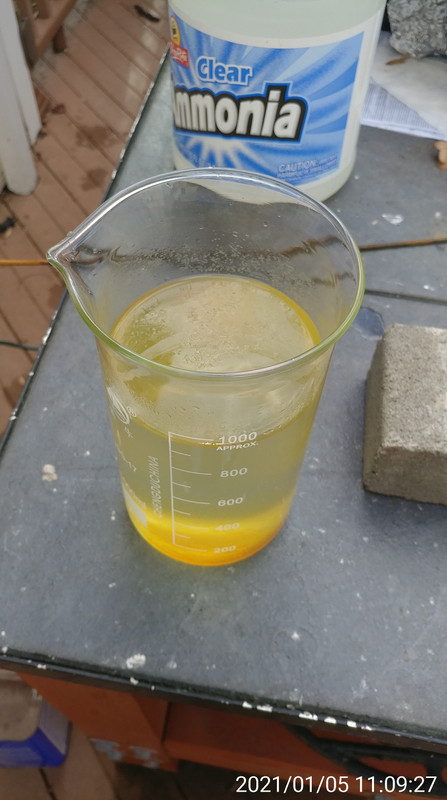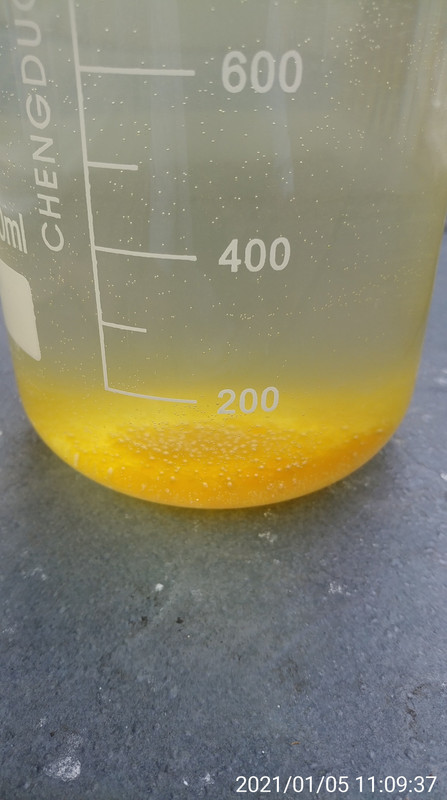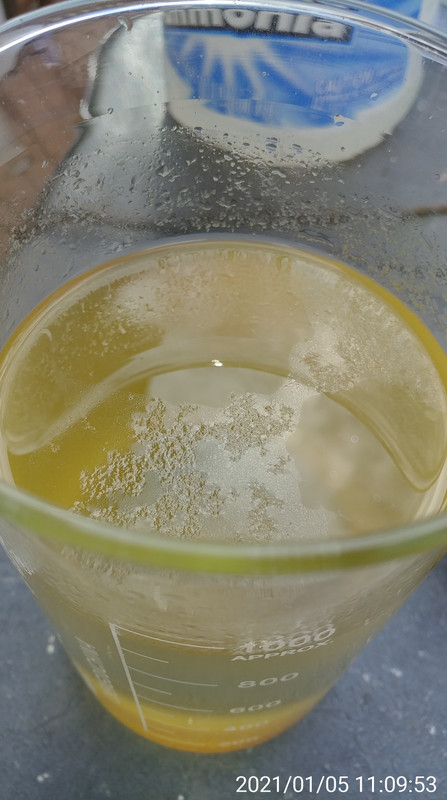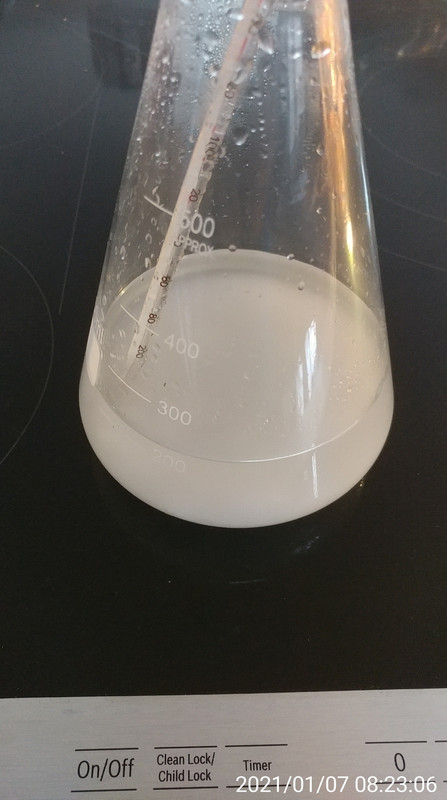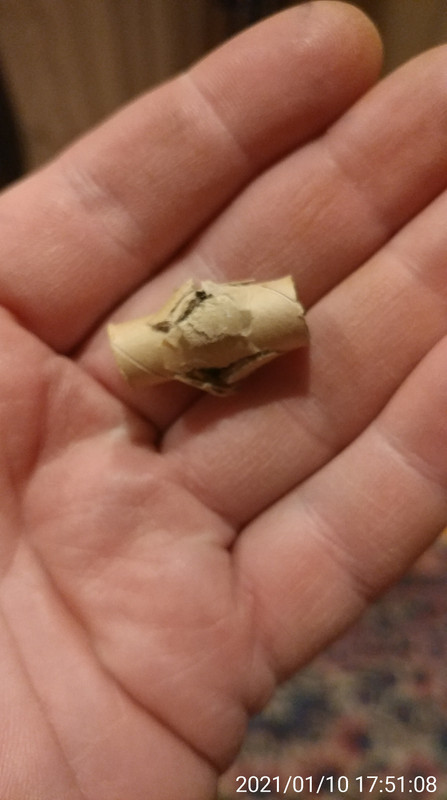Yeah, I used acetone to get rid of the solids and not have to deal with them. Also avoided any undue temperature spikes which would have happened if I
tried to dilute the mix directly with water, even ice water. Fortunately I have access to cheap good quality sulfuric acid in large amounts, so it's
reasonable to use more next time for fluid management reasons. 
For now, it looks like the brown oil on the bottom is slowly solidifying, and as I stir is I see clouds of small needle-like white crystals in the
water which I think are the ETN. I'll let it sit until tomorrow and reevaluate.
|




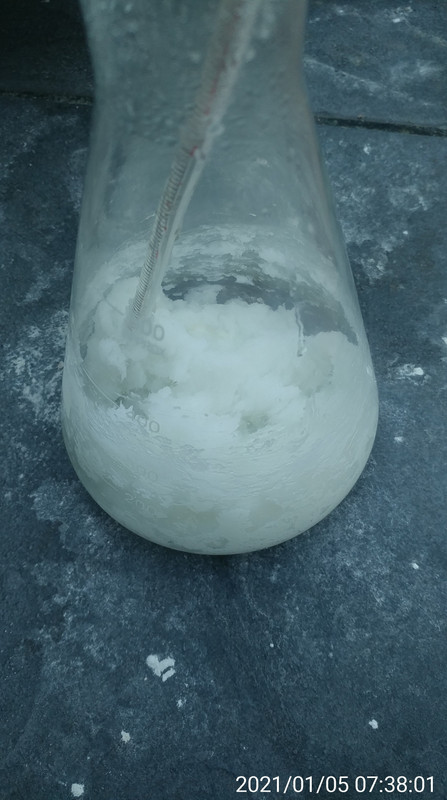


 )
)